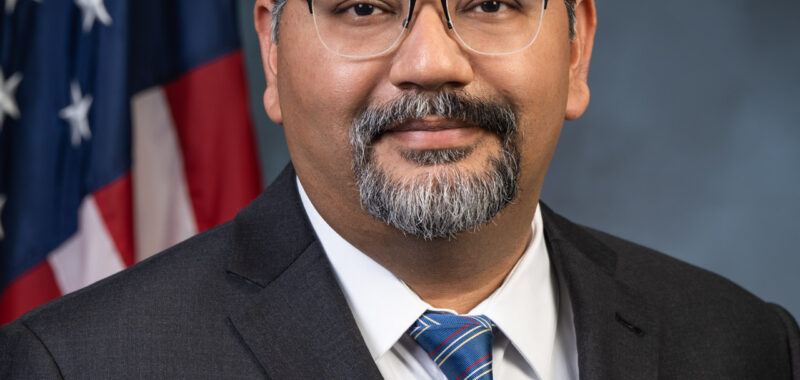Ginnie Mae has taken a far more active role in the reverse mortgage industry over the past two years, stemming from the failure of a major industry lender that threatened liquidity for other major players in the space. The government-owned company has long overseen the Home Equity Conversion Mortgage (HECM)-backed Securities (HMBS) program, through which reverse mortgages are securitized and sold to investors.
While recent industry liquidity challenges were first addressed under the leadership of former Ginnie Mae president Alanna McCargo, the company’s acting president, Sam Valverde, is currently charged with leadership responsibilities. These include the eventual implementation of “HMBS 2.0,” a complementary program that the industry is looking at with great interest.
To get an idea of where things stand with Ginnie Mae’s recent reverse mortgage activity, HousingWire’s Reverse Mortgage Daily (RMD) sat down with Valverde for an exclusive interview.
Small size, big importance
When asked about his own interactions with the reverse mortgage program and some of the initiatives he is overseeing, Valverde recognized the importance of the program in meeting the company’s mission.

“HMBS is a small part of our portfolio, but it’s a critically important part of how we meet our mission,” he said. “Ensuring this critical retirement tool remains available to America’s seniors is not just Ginnie Mae’s priority — it’s a shared priority between us, the Federal Housing Administration (FHA), the U.S. Department of Housing and Urban Development (HUD) broadly, and our industry partners. It’s more critical than ever because our population continues to age, and more seniors are going to need a way to supplement their income without being displaced.”
Similar to recent comments from FHA Commissioner Julia Gordon, Valverde gave service to the idea of the industry’s demographics having the potential to expand the base of reverse mortgage business.
“I think the growing demographic need for this program suggests that there’s new demand on the horizon that can support future growth of the program, if we can stabilize it in the near term,” he said. “At Ginnie, we’ve made addressing the issues facing the reverse mortgage sector a critical priority, even when we’ve had resource constraints to contend with. It will remain a priority going forward.”
Industry collaboration, actions taken
When asked about the partnership between Ginnie Mae and members of the reverse mortgage industry, Valverde said the shared work has been productive.
“[The industry has] been our partners in the program — both generally and in developing our response,” he said. “Our issuers make and aggregate the mortgages; Ginnie Mae can’t do that. We don’t serve consumers directly, so we rely on our issuers.
“When the rate environment precipitated the failure of RMF, it became clear we needed to act to preserve the viability of the program for senior borrowers, while ensuring RMF borrowers weren’t adversely affected. We began focusing on multiple issues facing the sector.”
The first priority was on tail finance liquidity, to ensure that issuers could continue to honor borrowers’ draw requests. That work began in October 2023, but there was also a need to address liquidity constraints that older HECM loans were placing on issuers.
“This year, we really started working in tandem with FHA, and they’ve done a lot to support issuer liquidity as well,” he said.
FHA reduced its number of occupancy defaults by allowing residents to certify occupancy via alternative means. It also made it easier to apply for loan assignments earlier while allowing servicers to resolve defaults more quickly by increasing incentives for borrowers, their heirs and servicers. But more work was needed, which is where HMBS 2.0 comes into the fold.
“Even with all this great work from FHA, it was clear more needed to be done,” Valverde said. “So, we began exploring a new securities program — what we and the industry have been calling ‘HMBS 2.0.’ For that, we’ve consulted closely with issuers and industry experts to identify the needs of the market and get their input.”
Look for more from Sam Valverde on reverse mortgages and HMBS 2.0 soon on HousingWire’s RMD.

